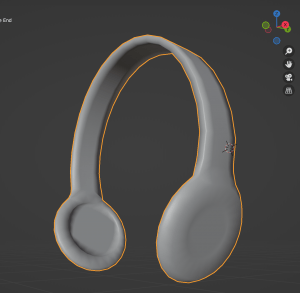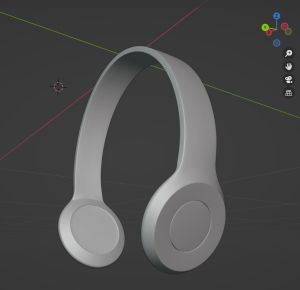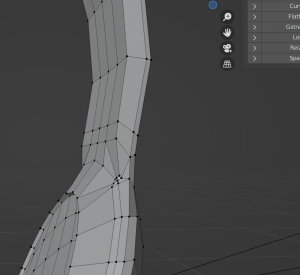Progress Report
Since last post, I have completed my second project, which followed Grant Abitt’s tutorial series. This series was good, because in comparison to Blender Guru’s tutorials, it was a little bit more open and self guided. Grant Abbitt often gave the viewer (me) a challenge and asked them to pause the video and try to complete it, then explain how to do it after, rather than just having the viewer follow along. This helped me to check how much I actually knew, as in the previous tutorial it was sometimes hard to tell the difference between what I understood and didn’t as I followed along. It also made me step back and put more focus on basic concepts, as Blender Guru’s tutorials became quite complicated at times. Here is the final product that I made following Grant Abitt’s tutorial series: Second Blender Project. During our first meeting, my mentor and I decided I should focus on working with Blender’s edit mode, and doing hard-surface modelling. I have watched many of his videos about hard-surface modelling, and have learned a lot. While they haven’t been tutorials on a certain project, I have learned a lot about the special measures that need to be taken to model properly, in a way that will be acceptable in the VFX industry. I then started modelling a pair of headphones to practice these concepts and techniques.
During my most recent meeting with my mentor, he helped me to clean up and make significant progress on my latest project, He showed me a way of bevelling that used the bevel modifier in conjunction with bevel weight properties of different values for different edges that inform the bevel modifier on how much to bevel them. He also helped me to fix some problems with the vertexes in my mesh to make it more functional and clean. By looking at the models, you can see that the one previous to this meeting doesn’t have any sharp edges, and everything is soft and mushy looking. When bevel weight and a bevel modifier were added, the edges were defined with a specific bevel, so they no longer just were shaded as soft as possible. I also added a gap between the centre circle and the rest of the headphone for a button. I only need to add a few more touches to this model, and then it will be complete.


Mentor
During my video call with my mentor, I think one aspect that went very well was that I learned a lot of new skills in blender and I was able to make my project better with my mentor’s help. I had definitely gotten stuck, for a few reasons. Firstly, I had attempted to make a rounded surface by using the bevel tool. It bevelled the edge fine, but since it was not a complete circle, it left a mess on the points where it touched the neck of the headphones. Robert’s solution was to combine many of the points in the centre in order to start anew, making cuts until the mesh was cleaner. Before that though, we cut the headphones in half and used a mirror modifier, so that the changes we made to one side automatically applied to the other. We then selected edges and gave them a bevel weight, then applied a bevel modifier to define the edges and a subdivision surface modifier to make give the headphones more points, making them look rounder.
Below is a before and after of cleaning up the points that were messy.


As far as communicating effectively with one another goes, I think my mentor and I did okay, but could have done better. While I was able to learn a lot during our meeting, and was able to improve my project a lot, I think that I could have done an even better job of asking questions to learn more, and my mentor could have done a better job of explaining his thought process for some of the changes he made. Overall however, I think that our communication was sufficient.
One logical challenge that we ran into was that we had to meet over video call. This was challenging, because my mentor couldn’t just make changes to my original file for my project. Instead, I had to send him a copy of the file, then he had to open it and make changes, and I had to follow along. In order for me to follow along, and Robert to see what I needed help with, we both had to share our screens. My mentor mentioned himself that this was quite a burdensome way to do it, and I agree. However, this challenge might have also brought benefits, as it made sure, to a degree, that my mentor couldn’t just do it for me, and I still had to interact with my project and make the changes myself, which will likely help me remember and understand it better.
Moving Forward
Before next blog post, I will finish working on the model of headphones that I am making. I hope to add details such as more buttons, a more detailed neck, and the actual muffs that are attached to the headphones and go around the ears. After I have completed that project, I will likely try to add textures, lighting, and other similar elements to make it look more presentable. I hope that while making those changes, I find another subject that I want to narrow in on next, just like I did with hard surface modelling.